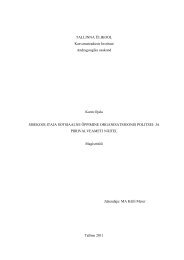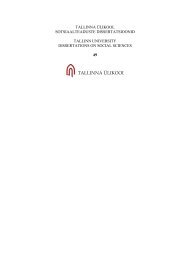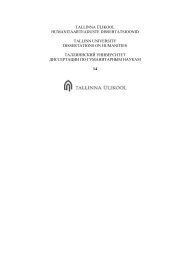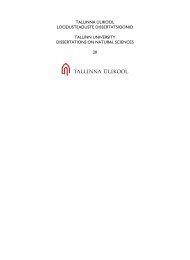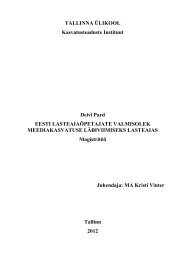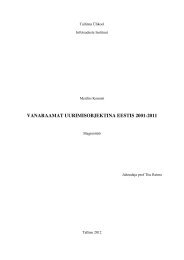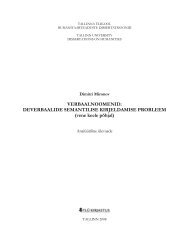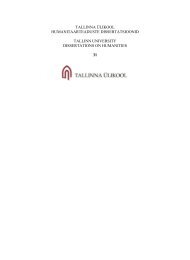Download (1157Kb) - E-Ait
Download (1157Kb) - E-Ait
Download (1157Kb) - E-Ait
You also want an ePaper? Increase the reach of your titles
YUMPU automatically turns print PDFs into web optimized ePapers that Google loves.
Chapter Two: Literature review.<br />
2. Introduction<br />
This chapter aims to review various studies done which are relevant to this study. It will start<br />
with general discussion about intellectual capital then later will review matters pertaining to<br />
knowledge sharing. Customer capital and renewal capital are included in the review so as to<br />
provide general understanding of intellectual capital as a whole; however they are beyond the<br />
scope of the main discussion presented in chapter four. Such terms as intellectual capital,<br />
knowledge sharing, structural capital and human capital were used as key search terms.<br />
Knowledge transfer, human resources and intangible assets were also used as related terms.<br />
2.1. Intellectual capital general overview.<br />
“With the corporate intranet as a catalyst, intellectual capital has grown into knowledge<br />
management, the hottest new topic in the business community – up there on a par with<br />
Information technology (IT), as competitive advantage, Total Quality Management<br />
(TQM); and Business Process Reengineering, and it may well surpass them all” (Koenig,<br />
1998, p.222).<br />
Intellectual capital has been a subject of interest especially in the business world recently.<br />
The changing environment has stimulated stiff competition in almost every sector<br />
surrounding human activities. Developing intellectual capital management as the<br />
organizational modus operandi is the recipe for success. According to Nermien Al-Ali<br />
business resources were formerly comprised of 80 percent of tangible and capital resources,<br />
with intangible assets making up around 20 percent. He went on further to explain that,<br />
steadily this changed with intangible assets reaching 80 percent of the assets of the majority<br />
of organisations by 1999 (Al-Ali, 2003).<br />
The topic gathered increased interest more recently in the 1990s, with the rapid development<br />
of Information and Communication Technologies (ICT). As business processes became<br />
increasingly „enabled‟ by large-scale information systems, information systems designers<br />
attempted to capture employees‟ implicit and explicit knowledge in “corporate memory” by<br />
means of intranets and other similar applications (Malhotra, 2000, p.1) for more discussion<br />
about the origin of intellectual capital see also (Malhotra, 2000a, 2000b). Intellectual capital<br />
was perhaps more prevalent in 1995-2000. Even more important was that the Internet‟s<br />
explosion during the 1990s occurred concurrently with the intellectual capital movement. The<br />
8





